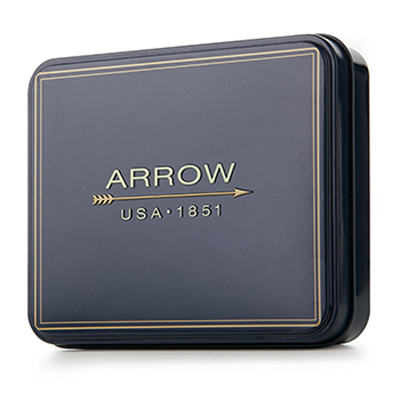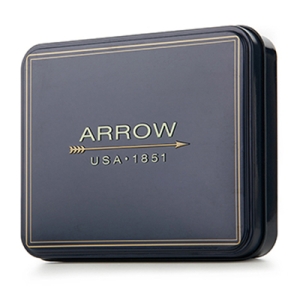Cookie Tin Box Manufacturer
Cookie Tin Box Manufacturer: Pioneers in Custom Biscuit Packaging
Cookie tin box manufacturing is a specialized industry that caters to the packaging needs of cookie producers, bakeries, and confectionery companies. These manufacturers design and produce tin boxes that are not only functional in preserving the freshness and flavor of cookies but also add to the aesthetic appeal of the product, making them desirable to consumers. The process of creating these tins requires precision and an understanding of both metalwork and design trends.
The production of cookie tin boxes involves several steps, including design conception, metal cutting, shaping, and often intricate printing processes to achieve the desired look. Manufacturers must stay abreast of food safety regulations to ensure that all materials used are suitable for containing edible products. With advancements in technology, many manufacturers have also incorporated sustainability practices, offering reusable and recyclable tin options.
History of Cookie Tin Box Manufacturing
The manufacturing of cookie tin boxes began in the early 20th century, coinciding with the mass production of cookies and the need for durable packaging. Tinsmiths, skilled craftsmen who worked with light metals, were among the first to construct these boxes. They crafted them from tinplate, a thin steel sheet coated with tin, which prevented rusting and kept the cookies fresh.
During the 1920s, with advancements in printing technology, manufacturers started to decorate tin boxes with lithography. This allowed for high-quality, colorful designs that served both to attract customers and provide brand recognition. The process involved printing directly onto the metal before forming the box’s shape.
| Decade | Progress in Manufacturing |
|---|---|
| 1920s | Introduction of lithography |
| 1950s | Adoption of automation techniques |
| 1990s | Rise of environmental awareness |
| 2000s-today | Shift to sustainable materials |
In the 1950s, the industry saw a shift towards automation. Machines could now cut, shape, and print tin boxes at greater speeds, reducing costs and increasing production rates. This enabled manufacturers to meet the growing demand for cookie tins during the holiday seasons, when they were often given as gifts.
The 1990s brought increased awareness of environmental impacts, prompting the industry to consider the recyclability of materials. Manufacturers began to emphasize the use of recycled materials and improved the sustainability of their production processes.
Today, cookie tin box manufacturing has evolved with an emphasis on sustainability and customization. They continue to be a popular choice due to their durability, protective qualities, and nostalgic appeal.
Cookie Tin Box Manufacturing Process
The manufacturing process for cookie tin boxes involves a series of meticulously planned steps, from design conception to the final quality checks. Manufacturers use specialized equipment and detailed procedures to ensure that each product meets the industry’s high standards.
Design and Prototyping
Initially, designers must create detailed blueprints and graphics for the cookie tin boxes, taking into account the clients’ specifications and the functionality of the product. Prototyping then follows, where a sample tin is produced using 3D rendering tools or physical models to visualize the final product.
Material Selection
Material selection is a critical phase where manufacturers choose the appropriate type of metal, typically tinplate or aluminum. The chosen material must exhibit qualities such as non-toxicity, corrosion resistance, and suitability for food storage.
- Preferred materials:
- Tinplate
- Aluminum
Production and Assembly
The production process starts with cutting and shaping the metal sheets into panels or flat pieces, followed by printing and coating if the design requires it. Assembly involves joining the various parts, such as the body, lid, and bottom of the tin box, usually by methods like welding or crimping.
- Key production steps:
- Cutting
- Shaping
- Printing (if necessary)
- Coating (if necessary)
- Assembly
Quality Assurance
Quality assurance is the final hurdle where the finished products undergo strict inspections for any defects or inconsistencies. Testing includes checking for proper seal integrity, absence of sharp edges, and adherence to the desired aesthetics.
- Inspection checks:
- Seal integrity
- Smooth edges
- Visual inspection
Leading Cookie Tin Box Manufacturers
This section provides insight into the top producers of cookie tin boxes, highlighting their regional dominance, adoption of innovative manufacturing techniques, and capabilities for customizing products to meet diverse customer needs.
Regional Market Leaders
The global market for cookie tin box manufacturing is competitive, with several key players dominating specific regions. North America is led by companies such as Metallic Packaging Corp. which has a strong distribution network across the United States and Canada. In Europe, Tin Box Company Ltd. stands out for its extensive reach across the European Union, offering a wide range of designs that cater to European tastes. Asia-Pacific boasts of giants like Hangzhou Changda Can Tool Co., known for their massive production capacity and supply to both local and international markets.
Innovative Manufacturing Techniques
Leaders in cookie tin box manufacturing consistently invest in innovative techniques to improve their products. For example, Superior Printing Technology Inc. employs advanced digital printing methods that allow for high-resolution imagery on their tins, making them attractive for promotional use. Eco-Pack Industries has gained recognition for their adoption of sustainable production practices, using recycled materials and energy-efficient processes to manufacture their cookie tin boxes.
Customization in Manufacturing
Customization is a significant factor in the industry, and manufacturers like DesignTins Co. excel in this domain. They offer clients the opportunity to order bespoke cookie tins with choice in shapes, sizes, and embossing options. Bespoke Tins Ltd. specializes in crafting unique tins through a collaborative design process, ensuring that each client receives a product that perfectly aligns with their brand identity and marketing goals. They make it possible for clients to create distinctive and memorable packaging solutions.
Customized options provided by leading manufacturers typically include:
- Shapes: Round, square, heart-shaped, etc.
- Sizes: Varying from small, individual servings to large family-sized tins.
- Printing: Options for high-quality, full-color, and thematic designs.
- Embossing: Raised or inset patterns and text on the tin’s surface.
Trends and Future of the Industry
The cookie tin box manufacturing industry is evolving, affected by environmental concerns, technological improvements, and changing consumer tastes.
Sustainability Practices
Manufacturers are increasingly adopting greener practices to produce environmentally friendly cookie tins. They source recycled materials and utilize more sustainable production processes. An emphasis on biodegradability and reusability caters to consumer demand for sustainable packaging solutions.
- Materials Used: Recycled steel, bioplastics
- Process Innovations: Solar energy, waste reduction initiatives
Advancements in Production Technology
Recent technological advancements are streamlining production and allowing for more intricate designs.
- 3D Printing: Allows rapid prototyping and customization
- Automated Machinery: Improves efficiency and reduces manufacturing costs
- Smart Factories: Integrating IoT for real-time monitoring and optimization
Consumer Preferences
Consumer preferences are shifting toward personalization and convenience. They value unique designs and multifunctional packaging.
- Design Trends: Vintage, minimalistic, modern
- Functional Features: Re-sealable lids, clear windows, stackability
- Preference Shifts: Increased demand for:
- Seasonal and holiday-themed tins
- Tins for gift-giving occasions




Leave a Reply
Want to join the discussion?Feel free to contribute!